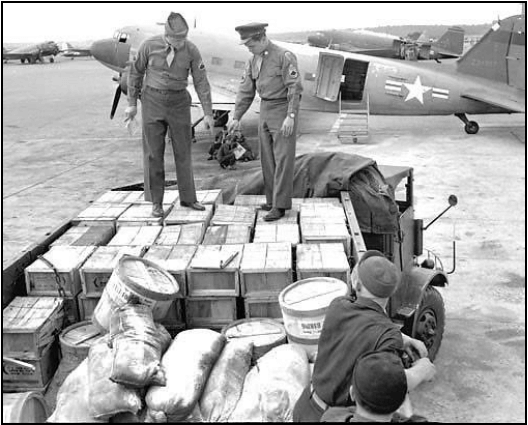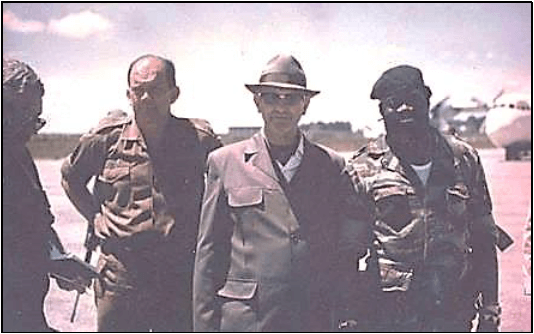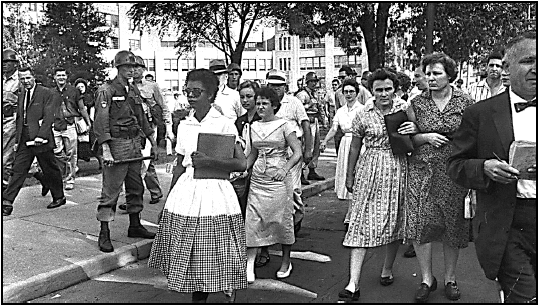History Paper 1 Addendum - Grade 12 September 2021 Preparatory Exams
Share via Whatsapp Join our WhatsApp Group Join our Telegram GroupADDENDUM
QUESTION 1:
HOW DID THE BERLIN BLOCKADE CONTRIBUTE TO COLD WAR TENSIONS BETWEEN THE UNITED STATES OF AMERICA (USA) AND THE SOVIET UNION (USSR)?
SOURCE 1A
This source explains the reasons for Stalin’s blockade of Berlin in 1949.
At the end of Second World War, the United States, France and the Soviet Union divided the defeated Germany into four occupational zones, as outlined at the Yalta Conference in February 1945 and formalised at Potsdam later that year. Berlin, though located within the Soviet-occupied zone, was divided as well, with the Western part of the city in Allied hands and the east under Soviet control. [From https:// www.history.com/topics/cold-war/berlin-blockade. Accessed on 6 February 2021.] |
SOURCE 1B
The source below focuses on the reaction of the Western Powers towards the Russian blockade of Berlin in 1949.
The Berlin Blockade was the first serious clash between the members of the former Grand Alliance, and from this point, it was very clear that the Cold War had begun. The Western Allies were not prepared to risk armed conflict with the Soviets to open the way to West Berlin. They decided that their sectors of Berlin (west) would be supplied by air. This became known as the Berlin Airlift and it lasted for eleven months until the Blockade was lifted in May 1949. [From https://www.bbc.co.uk/bitesize/guides/zgdnmsg/revision/4. Accessed on 6 February 2021.] |
SOURCE 1C
The extract below outlines the impact of the Berlin Blockade on the Allied Powers and citizens of West Berlin.
Between 24 June 1948 and 30 September 1949 British and American soldiers made about 400 000 flights into Western Berlin, hauling (carrying) almost two million tons of food, coal,clothes and other necessities. During the busiest days, a plane landed every 45 seconds at one of the three airports in West Berlin. Pilots even used the rivers as runways to bring in their essential cargo. Berlin’s Havel River was a landing site for amphibious aircraft (planes which can land on water) participating in the airlift. [From A History of the United States, Volume II:1865 to the Present – American Voices by S. Foresman] |
SOURCE 1D
This source is a photograph showing supplies delivered to West Berlin between 1948 and 1949.
[From https://schoolshistory.org.uk/topics/world-history/cold-war-1945-1972/berlin-airlift/. Accessed on 05 January 2021.]
QUESTION 2: WHY DID ANGOLA BECOME THE FOCAL POINT OF THE COLD WAR IN AFRICA IN THE 1970s?
SOURCE 2A
This source focuses on the origins of the Angolan War of Independence.
Rich in diamonds and oil, Angola was one of the last African nations to receive independence from a European power. On 25 April 1974, a Portuguese military coup d’état protesting the country’s colonial practices successfully overthrew the regime. The combined forces of the Popular Movement for the Liberation of Angola (MPLA), the National Front for the liberation of Angola (FNLA), and the National Union for Total Independence of Angola (UNITA) created a transitional government with the Alvor Accord of 1974. [From www.blackpast.org>angolan-civil-war1975-2002. Accessed on 7 February 2021.] |
SOURCE 2B
This source below explains the involvement of the superpowers in the Angolan Civil war of 1975.
The crisis in Angola developed into a Cold War battleground as the superpowers and their allies delivered military assistance to their preferred clients. The United States supplied aid and training for both the FNLA and UNITA, while troops from Zaire assisted Holden Roberto and his fighters. China, also, sent military instructors to train the FNLA. The Soviet Union provided military training and equipment for the MPLA. During the summer of 1975, the Soviet-supported MPLA was able to consolidate (establish) power in Luanda and oust (overthrow) the USA-supported FNLA from the capital, but the FNLA continued to attack. The remaining Portuguese troops failed to stem (stop) the violence. When MPLA leader Agostino Neto announced 11 November 1975 as the day of Angolan independence, Lisbon decided to withdraw its troops on that day. [From https://history.state.gov/milestones/1969-1976/angola. Accessed on 8 February 2021.] |
SOURCE 2C
The source below explains the reasons for South Africa’s involvement in the Angolan Civil War of 1975.
In the House of Assembly in January 1976 Vorster (South African Prime Minister) placed the blame for South Africa’s intervention in Angola squarely on the shoulders of the Russians and Cubans: ꞌOur involvement was the effect of Russian and Cuban intervention. If they did not enter Angola, if they did not take part in this affair, if they did not try to subvert (undermine) the whole of Angola and to suppress (contain) its people, South Africa would never have entered Angola at all … We went in to chase Cuba and the MPLA away from the dams (Ruacana and Calueque)’. [From South Africa in the 20th Century by BJ Liebenberg and SB Spies] |
SOURCE 2D
The photograph below appeared in The Observation Post and is titled ‘The enemy of my enemy is my friend.’ It depicts Magnus Malan, PW Botha and Jonas Savimbi on the Angolan border during the Angolan Civil War of 1975.
[From https://samilhistory.com/2017/08/19/the-enemy-of-my-enemy-is-my-friend/#comments. Accessed on 12 July 2021.]
QUESTION 3:
WHAT CHALLENGES DID THE LITTLE ROCK NINE FACE DURING THE INTEGRATION OF CENTRAL HIGH SCHOOL IN 1957?
SOURCE 3A
This source outlines the reason for the integration of educational facilities in Arkansas in the 1950s.
On 17 May 1954, the US Supreme Court ruled unanimously in Brown vs Board of Education of Topeka that racial segregation in educational facilities was unconstitutional. Five days later, the Little Rock School Board issued a statement saying it would comply with the decision when the Supreme Court outlined the method and time frame in which desegregation should be implemented. [From www.history.com>central high. Accessed on 8 February 2021.] |
SOURCE 3B
This source focuses on Elizabeth Eckford’s experiences on 4 September 1957, her first day at Central High School.
The first scene Eckford saw when she got off the bus a block from Central High School was a sea of angry faces. She tried to walk to school, but a jeering (taunting) mob blocked her path. All alone, her knees shaking, she pushed through the mob. She was trying hard not to show her fright. ‘It was the longest block I ever walked in my whole life’ she said later. Eckford was one of nine students who had volunteered to be among the first African Americans to attend Central High School. When she left for school that morning, Eckford thought there might be trouble. But she didn’t know that she would see hundreds of angry white people who had been waiting for her since early morning. Suddenly a shout went through the crowd. Elizabeth Eckford was attempting to enter the school. [From http://www.ahsd.org/ socialstudies/williamsm/The%20Mob%20at%20Central%20 High%20School.pdf. Accessed on 9 February 2016.] |
SOURCE 3C
The photograph below shows Elizabeth Eckford, one of the nine black students on her way to enroll at the all-whites Central High School, in Little Rock, Arkansas in August 1957. Behind her is a group of parents and members of the National Guard who were racially harassing her.
[From https://www.history.com/this-day-in-history/central -high-school-integrated. Accessed on 10 February 2021.]
SOURCE 3D
This source focuses on the events that occurred after the Little Rock Nine had started attending at Central High School in 1957.
That evening, from the White House, the president delivered a nationally televised address in which he explained that he had taken the action to defend the rule of law and prevent ‘mob rule’ and ‘anarchy’. On 25 September 1957, the Little Rock Nine entered the school under heavily armed guard. [From www.history.com>central-high... Accessed on 8 February 2021.] |
ACKNOWLEDGEMENTS
Visual sources and other historical evidence were taken from the following:
- A History of the United States, Volume II:1865 to the Present – American Voices by S Foresman
- historytoday.com
- http://www.ahsd.org/socialstudies/williamsm/The%20Mob%20at%20Central%20High%2 0School.pdf
- images.app.goo.gl/e27YpuvQ5ar9M6
- www.atomicheritage.org>history
- www.blackpast.org>angolan-civil-war1975-2002
- www.history.com/this-day-in-history/central -high-school-integrated
- www.history.com/topics/cold-war/berlin-blockade.
- www.history.com>central
- www.history.com>central-high…
- https://samilhistory.com/2017/08/19/the-enemy-of-my-enemy-is-my-friend/#comments
- South Africa in the 20th Century by BJ Liebenberg and SB Spies